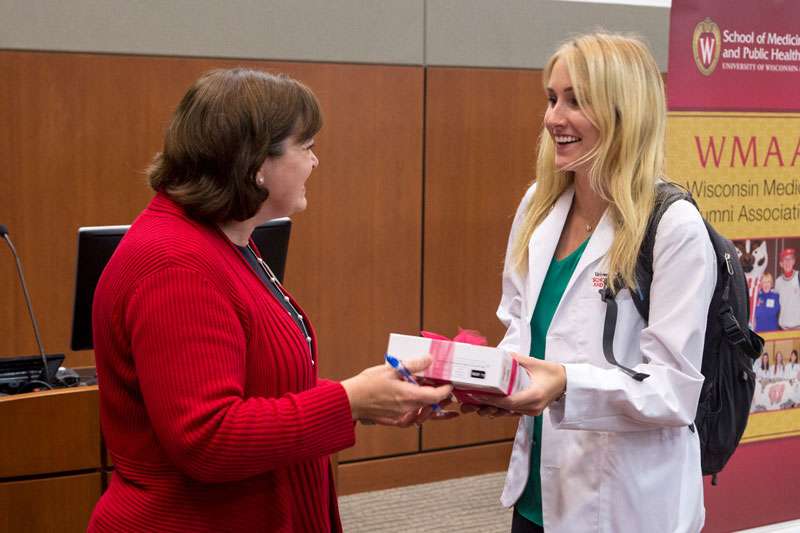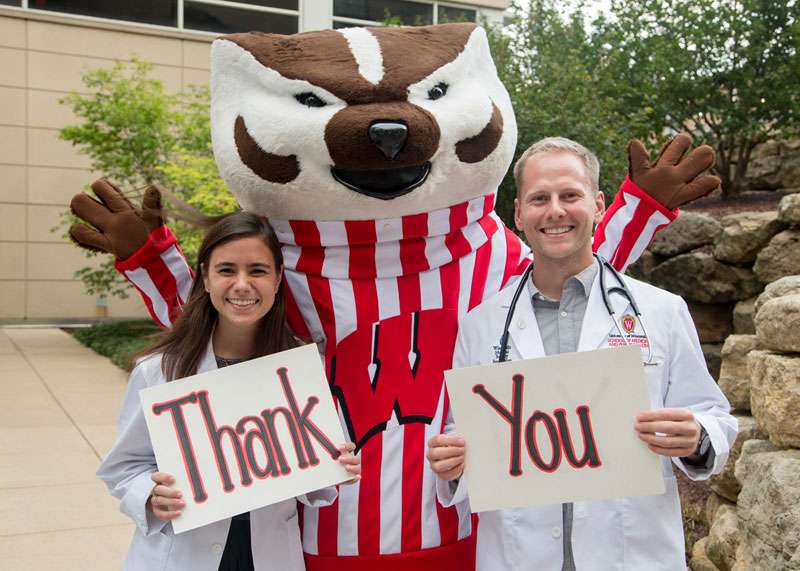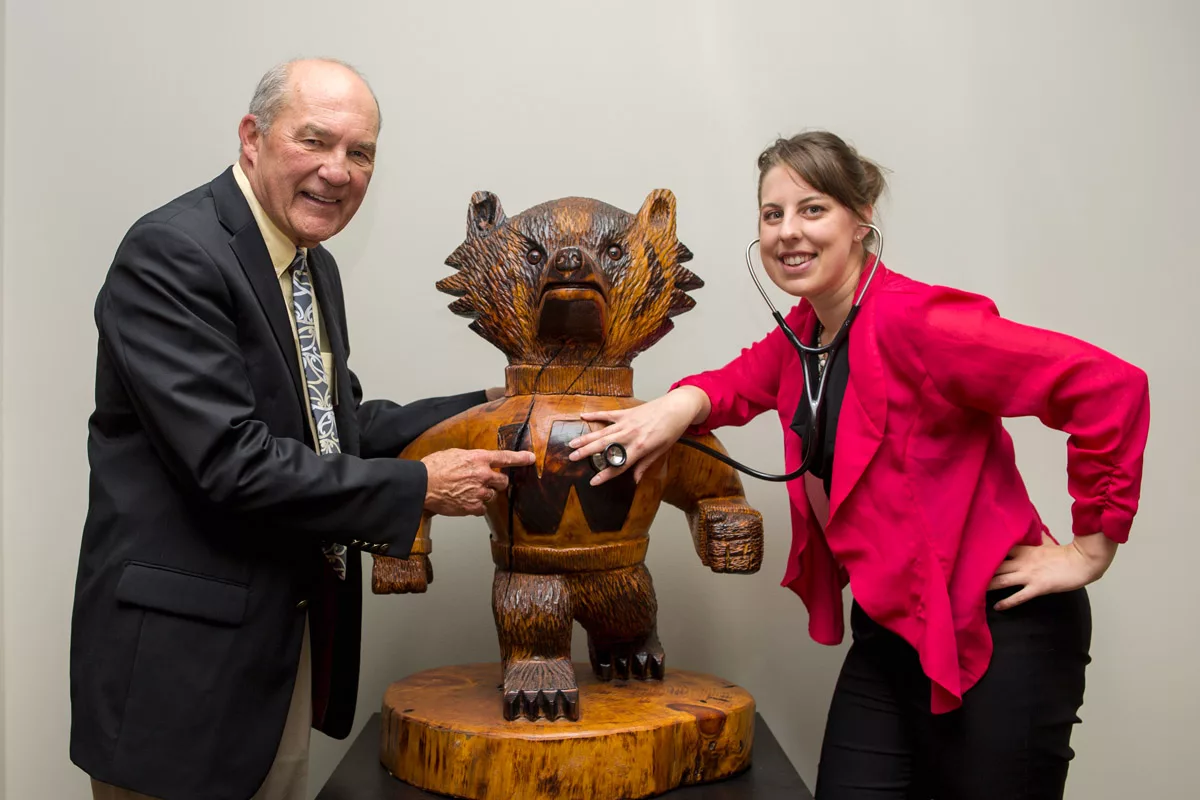‘Should I Get an MPH Degree?’ Patrick Remington Shares His Insights
The associate dean for public health reflects on his journey as a physician trained in preventive medicine and public health and offers advice for those considering the degree.
Dictionaries define stethoscopes in practical terms, but the Wisconsin Medical Alumni Association (WMAA) added “symbolic gift” to the meaning — as generous alumni of the University of Wisconsin School of Medicine and Public Health (SMPH) bestow these tools upon entering medical students each fall.
Further, the WMAA strategically matches recipients and donors based on interests or geography, such as hometown or practice location. At a late August 2017 ceremony, SMPH faculty presented each new student with a high-quality stethoscope to use throughout their training and careers.

Gwen McIntosh, MD ’96, MPH, described many ways the WMAA helps students throughout medical school and beyond. “The WMAA will be an integral part of your medical school experience, hosting great events and providing alumni support — from scholarships to networking and shadowing opportunities,” McIntosh, associate dean for students and a member of the WMAA Board of Directors, told the group. Each student and stethoscope donor pair will get to meet each other during the academic year.
One such pair — SMPH Emeritus Dean and Professor Philip Farrell, MD, PhD, and Katie Mooney, MPH — had already known each other for about a year when Farrell surprised Mooney with the gift of a stethoscope. The two share a passion for cystic fibrosis (CF) research, in which Farrell has been devoting his career. They met in fall 2016, shortly after Mooney completed a master of public health (MPH) degree at Northern Illinois University, when she began working with Farrell on a CF-related study with parents of newborns.
Their project seeks to understand if and how parents would like to receive positive newborn screening results that indicate minimal to no health problems for the child but may cause emotional distress for the family. Ultimately, Mooney and Farrell believe this research can help inform policies for disclosing newborn screening results at a population level. Mooney feels fortunate to have joined the research team, which has allowed her to build upon experience she gained through her undergraduate work in psychology and graduate studies in public health.

“My efforts have been met with immense support and guidance from Dr. Farrell and other colleagues,” she says. “It was an unexpected honor to be gifted my stethoscope from someone who initially welcomed me to the UW School of Medicine and Public Health and continues to help shape my professional identity.”
She notes that in addition to being an expert in newborn screening, Farrell has a “keen awareness of practical considerations that make for productive, meaningful student research, such as open communication and engagement with professional societies.”

Farrell — who served as chair of the Department of Pediatrics from 1985 to 1994 and dean of the SMPH from 1994 to 2006 and is now semi-retired — notes, “It’s a wonderful feeling to help a student who will certainly be a superstar physician. In view of Katie’s superb contribution to a challenging research project, I regard this gift as a token of appreciation.”
Also a history buff, Farrell shared with Mooney the story of the invention of the stethoscope by René Laennec in 1816. Summarizing parts of Laennec’s treatise De l’Auscultation Médiate, published three years later, Farrell notes, “While walking to Hôpital Necker in Paris, Laennec had watched schoolchildren holding hollow sticks to their ears while others used the opposite end for singing and making other noises. He built his first instrument as a hollow wooden cylinder, which he later refined to comprise three detachable parts and added a funnel-shaped cavity to augment the sound.”